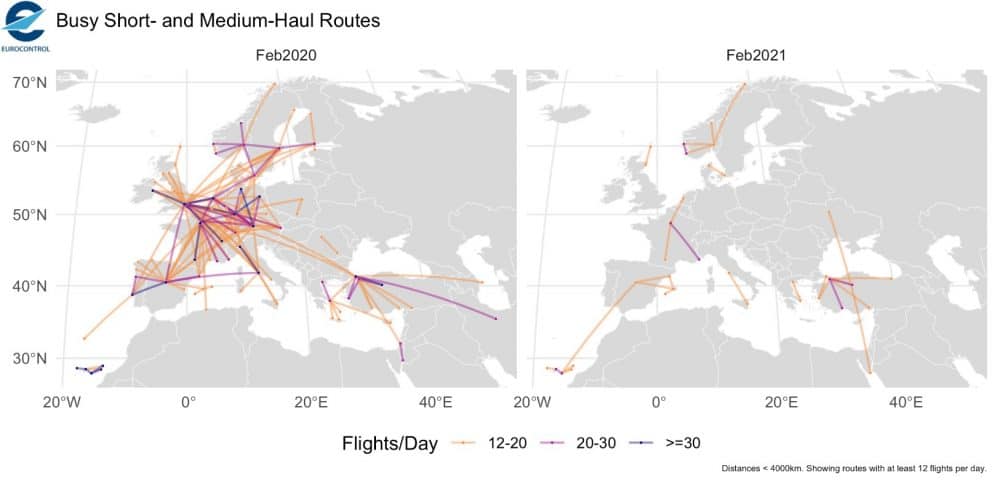
We all now it’s been a bad year for aviation, but the numbers illustrate just how devastating the pandemic has been. According to the latest EUROCONTROL data, February 2020 was the last relatively normal month for European aviation and since then the route map has been marked by a record-low frequency of short- and medium-haul routes and, of those that are flying, most are focused on domestic connections.
In February 2020 there were many high-frequency connections in the European network: 157 short- and medium-haul airport pairs had 12 or more flights per day (total of both directions). The graph shows that these connections were largely domestic, or between major capital cities: Madrid-Rome, London-Stockholm, for example. Busiest, with more than 35 flights per day, were Berlin-Frankfurt and routes between the Canary Islands.
With COVID-19, priorities have changed. As they clambered out of the first lockdown, airlines attempted to restore broad networks even if it could only be done at low daily frequencies. This winter, with a second wave of lockdown, not even that minimum connectivity could be maintained.
In February 2021, only 29 routes reached the 12 per day threshold. The highest-frequency connections were on domestic routes, such as Paris-Toulouse, Istanbul-Antalya, or in between Canary Islands. Indeed, this focus on domestic routes is evident across the February 2021 map. Madrid-Gran Canaria had a more frequent service this year than last, so appears in only the February 2021 map.
Two international routes stand out in February 2021: Kyiv-Sharm el Sheikh, mixing leisure charter and scheduled flights; and the core Air France-KLM link between Paris/Charles de Gaulle and Amsterdam/Schiphol, boosted a little by cargo from FedEx and others.





